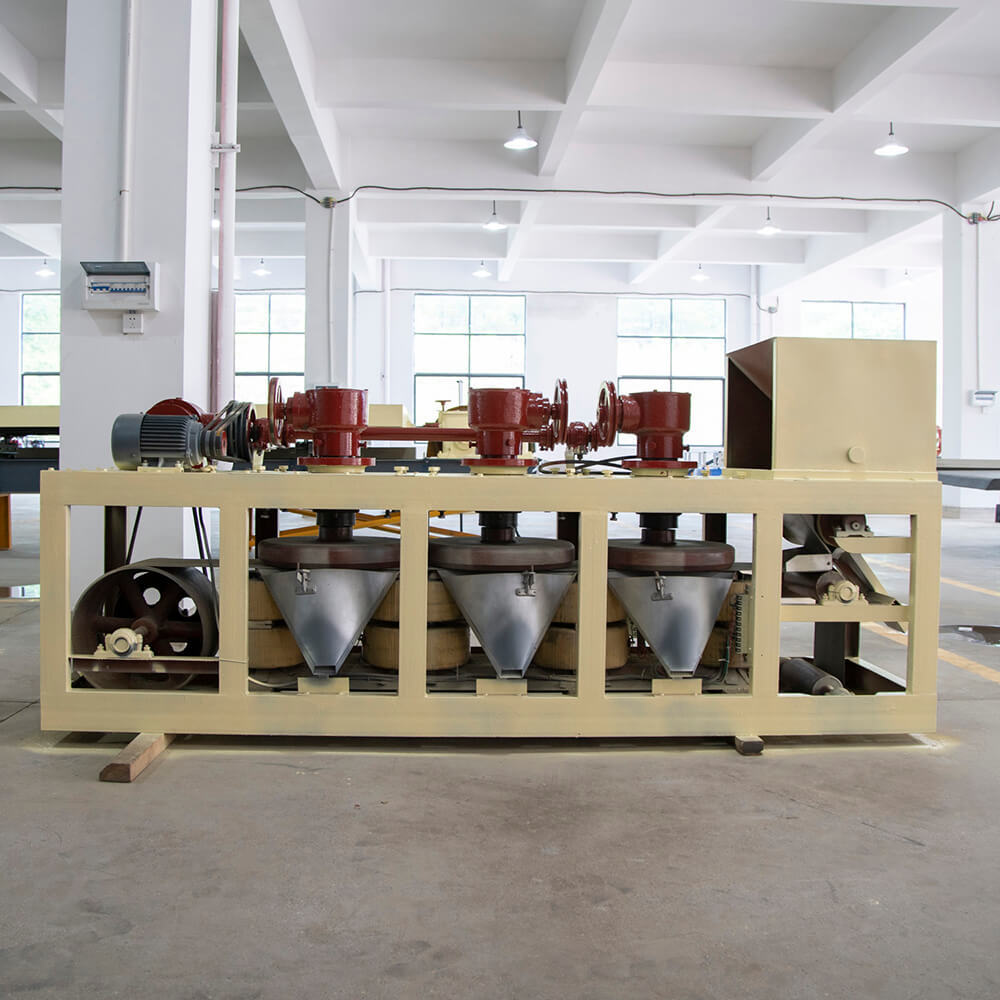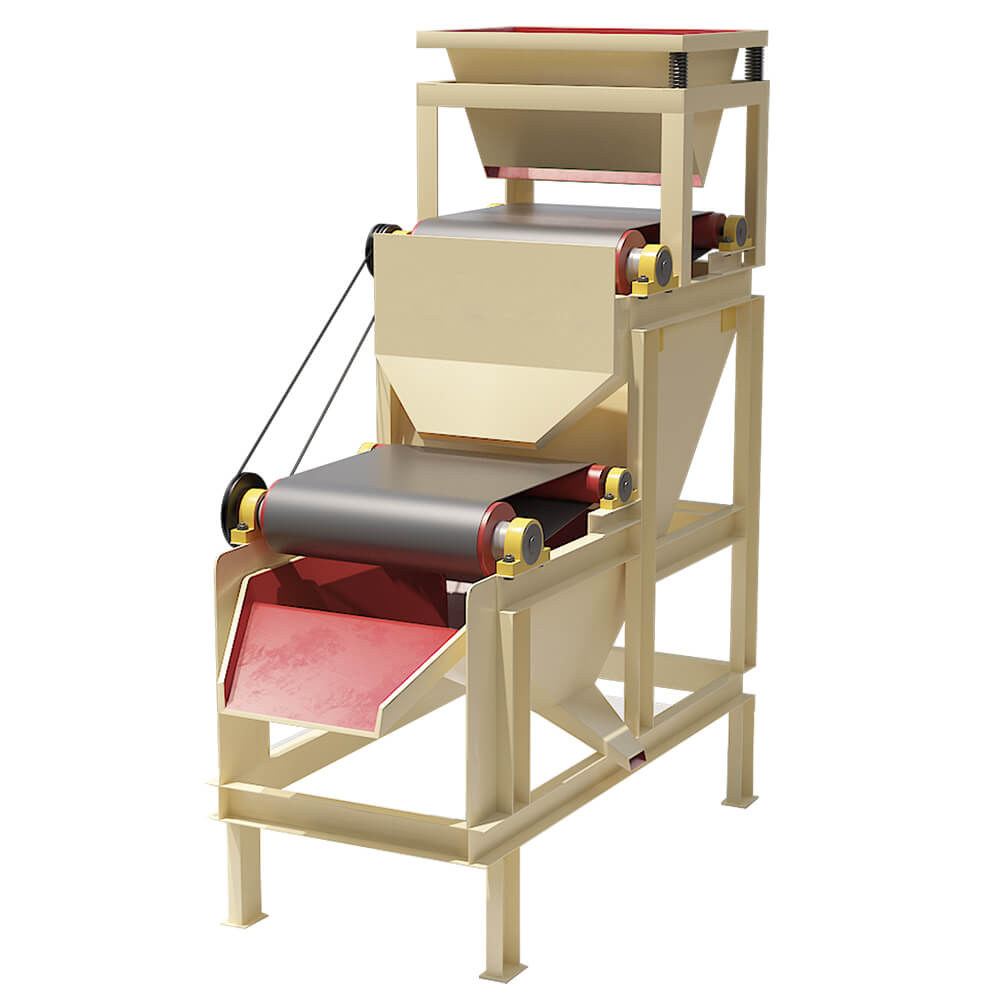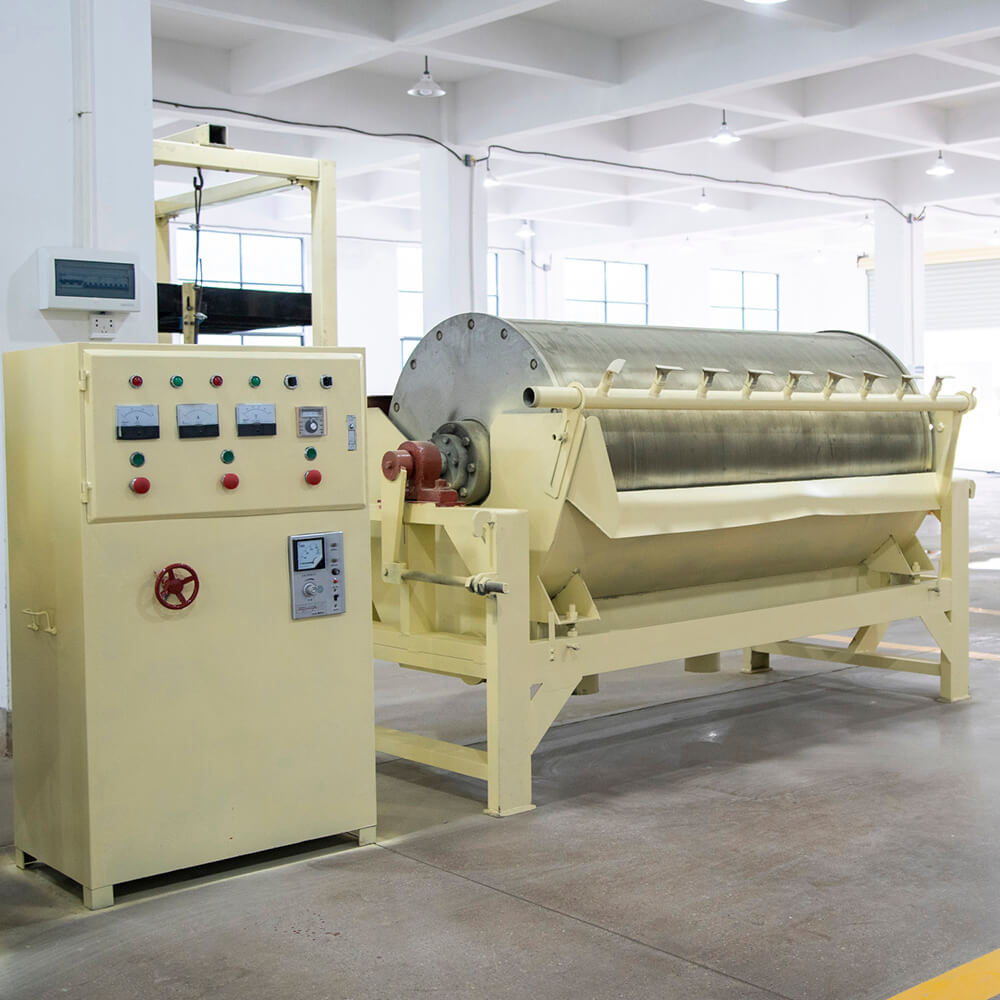A magnetic separator is a device that uses a magnetic field to separate ferrous objects from nonferrous objects. It is commonly used in ore extraction, waste treatment, food processing and other industries. Following we will introduce it to you and discuss how to choose it.
How Does The Magnetic Separator Work?
Magnetic separators typically consist of a rotating drum or conveyor belt with a magnetic field applied across its surface. As materials pass through the magnetic field, those with magnetic properties are separated from non-magnetic materials.
What Are The Primary Uses of Magnetic Separators?
Magnetic separator is mainly suitable for the following purposes:
- The lean iron ore magnetic separator performs rough separation after coarse or medium crushing to remove waste rocks such as surrounding rocks, improve the grade, and reduce the load of the following process.
- The magnetic separator is used in hematite reduction and closed-circuit roasting operations to separate the raw ore that has not been fully reduced and return it to be burned again.
- Magnetic separators are used in the ceramic industry to remove iron mixed in porcelain mud to improve the quality of ceramic products.
- Iron removal operations are required in coal mines, foundry sand, refractory materials, and other industries.
What Types of Magnetic Separators?
Magnetic Separator can be either dry or wet. The magnetic separator can also be classified as permanent or electromagnet magnetic separator. Magnetic separator for mineral processing industry falls into three basic categories: low, medium and high intensity, based on the relative magnetic field strength employed to accomplish separation. The following magnetic separators are common:
- Wet high-intensity magnetic separators (WHIMS)
- Wet / dry low-intensity magnetic drums (LIMS)
- Induced roll magnetic separators (IRM)
- Lift roll magnetic separators
- Cross-belt magnetic separators
- Disc magnetic separators
- Eddy Current Separator

3 PCS Dry Magnetic Separator

Dry High Intensity Magnetic Separator

Wet Drum Magnetic Separator
What is The Advantage & Disadvantage of Magnetic Separator?
- Dry magnetic separator
Advantages:The dry magnetic separator achieves the double benefits of high concentrate grade and high recovery rate. Its unique magnetic circuit design gives it the advantages of high magnetic field plate strength and reasonable gradient, which is especially beneficial to the Low-grade ore being recovered.
Disadvantages: Dry magnetic separators can only sort relevant dry materials and are especially suitable for sorting low-grade, weakly magnetic minerals. However, Some highly magnetic minerals cannot be sorted, which limits their scope of use. It is especially suitable for sorting related materials in dry and water-scarce areas. - Wet magnetic separator
Advantages: The wet magnetic separator has the advantages of deep magnetic field intensity on the cylinder surface, large magnetic system wrapping angle, stable magnetic field intensity, and stable and reliable transmission system, which can significantly improve the grade of ore entering the grinding process.
Disadvantages:Wet magnetic separators use water to separate and purify minerals. It can only be used in tropical and subtropical areas with relatively abundant precipitation. Because these areas have relatively abundant precipitation all year round and high mineral moisture content, they are unsuitable. In dry selection operations, such climatic conditions provide good water resources for mineral water selection. - High-intensity magnetic separator
Advantages: The high-intensity magnetic separator has high magnetic induction intensity and extremely high magnetic field attraction, which can fully meet the requirements for sorting low-grade, weakly magnetic ores.
Disadvantages: A high-intensity magnetic separator is an upgraded product of a dry separator developed based on the original dry magnetic separator by improving the magnetic field intensity and the arrangement of magnetic blocks. It can only be used to sort weakly magnetic and magnetic minerals in water-deficient areas. - High gradient magnetic separator
Advantages:The design of the high-gradient magnetic separator uses magnetization technology to form a complex composite magnetic system, which makes the magnetic field around the disk have a large spatial range and a large magnetic field gradient. Compared with similar products, it has the advantages of a high recovery rate and large processing capacity.
Disadvantages: Since the high gradient magnetic separator uses a moving magnetic field and magnet concentration technology, the relevant iron powder in the production process will contain an appropriate amount of water when gathered at the disc’s edge. At this time, magnetism and gravity are needed. It is sufficient to complete the entire unloading process but cannot be completed automatically.
How to Choose The Right Magnetic Separator?
Several factors must be considered when choosing a suitable magnetic separator, including the nature of the materials to be processed, processing capacity, separation requirements, process flow, etc. The following are general steps and considerations for selecting the right magnetic separator:
Understand the properties of the materials to be processed: The magnetic properties, particle size, humidity, and other characteristics of the materials to be processed need to be considered. For example, magnetic materials’ magnetic strength and non-magnetic materials’ content will affect the magnetic separation effect.
Determine the processing capacity and production needs: The amount of material that needs to be processed per hour and the continuous operation time of the production line need to be considered to determine the appropriate magnetic separator specifications and models.
Separation requirements: It is necessary to determine the separation effect requirements for magnetic and non-magnetic materials, including separation efficiency, accuracy, recovery rate, and other indicators.
Process flow and equipment configuration: It is necessary to consider the position and role of the magnetic separator in the entire process flow, as well as its cooperation with other equipment. For example, whether it must be used with crushing, screening, or other equipment.
Magnetic field strength and magnetic circuit design: The appropriate magnetic field strength and magnetic circuit design must be selected according to the processed materials’ magnetic strength and separation requirements to ensure good separation effects.
Equipment performance and reliability: Choosing a magnetic separator brand and model with stable performance and high reliability is necessary to ensure long-term stable equipment operation and reduce failures and maintenance costs.
Economical and cost considerations: Factors such as equipment purchase costs, operating costs, maintenance costs, etc., must be comprehensively considered when selecting a magnetic separator with high-cost performance.
Consult a professional: If you need help choosing a suitable magnetic separator, it is recommended that you consult a professional equipment supplier or engineer who can provide customized solutions and suggestions based on the specific situation.
Considering the above factors can help determine the most suitable type and model of the magnetic separator to meet actual production needs and achieve the expected separation effect.
